New technology, environment shapes energy system
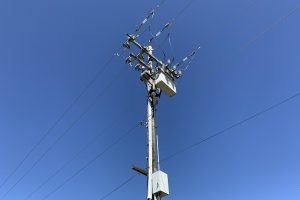
The electrical grid powers cities, factories, transportation, houses, communications; nearly everything people rely on in daily life. Keeping this vital machine running is a delicate balancing act, which goes almost entirely unnoticed by the public.
Technologically, today’s grid straddles a decades-old or even centuries-old design, and modern advances in clean, renewable energy. In the coming years, new needs, environmental pressures and economic shifts will continue to change how Americans get their power.
Casey Belmont, an Electric Program Manager for Pacific Gas and Electric, says this change is already the focus of California’s largest public utilities company.
“PG&E goes back a hundred-plus years, and it started as a variety of more localized companies that were turned into one big utility,” Belmont said. “So the electric grid goes back a long way, a century or more. That’s where a lot of our time is being spent, because there’s newer, safer ways to do things.”
PG&E supplies Fresno county with over 7,500 GWh of electricity every year. Keeping this power flowing requires numerous power plants, including the Diablo Canyon nuclear plant and the Helms pumped storage plant, 18,000 miles of transmission line, 850 substations and nearly 100,000 miles of distribution wire.
While industrial and residential solar plays an increasing role in supplying electricity, currently over 80 percent of California’s power comes from spinning generators. These “units,” whether powered by steam turbines, wind or water form the backbone of the national grid.
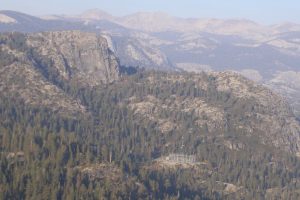
For about 16 percent of Fresno’s grid needs, electricity starts at one of the 270 hydroelectric plants in California. Hydroelectric power stations are one of California’s oldest sources of power, with the first plant going online in 1887.
Regardless of the age of the technology, hydroelectricity is a key element of the modern grid. Allen Simms, who served as a transmission grid controller and the generation supervisor at Balch power plant and the Helms Pumped Storage Plant, says hydroelectric generation offers numerous advantages.
“Hydro is a very efficient way of generating power, and the price of that generation is anywhere from 4-5 cents a kilowatt,” Simms said. “If you need power in a very short turn around, they can be online in 2-3 minutes. So for a reactionary-type of protective measure for a grid, they’re really vital.”
Hydroelectric power stations convert water pressure from a reservoir into rotational energy using a turbine, such as a Pelton wheel or a Francis turbine. However, before a hydro unit, or any turbine-driven power source, can send power to the grid, the generator needs to be synchronized with the grid.
Since the early days of American electrification, the grid has run on three-phase, 60 hertz alternating current, as AC can easily be transformed to a higher, more efficient voltage for transmission. AC power switches voltage polarity, or direction, as many times a second as its hertz frequency. AC generators produce electricity with a frequency determined by how many north/south poles are built into the generator and how fast the rotor spins.
Bryce Foshee speaks with hydroelectric operator Allen Simms about his time working for PG&E in the following podcast.
To maintain grid continuity, power stations must spin their generators at a steady rate and align their three-phase output with the grid’s phases. However, since the amount of energy needed or available to the grid can change at any time, the amount of torque required to keep the AC frequency consistent varies.
Besides supplying 35,000 GWh of power annually, California hydroelectric resources play an important part in preventing blackouts. Simms explains how hydroelectric stations can react within seconds to keep power flowing.
“We always have a 7 percent spinning reserve, where the units are there, they’re paralleled, they’re not generating but motoring,” Simms said. “If the frequency drops, they’ll automatically come up to make up the difference based on the frequency. That’s very vital to a grid to maintain your transmission continuity.”
[media-credit id=139 align=”alignleft” width=”232″]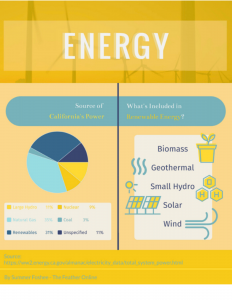 [/media-credit]
[/media-credit]
Electricity is typically generated far from cities. The transmission grid connects electricity from its generation source to cities, and does so at extremely high voltages to limit energy losses. The transmission grid connects not just Californian power plants and cities, but nearly every electrical generation plant in the U.S.
Jeff Dizney works as PG&E’s Lead Distribution Systems Operator for the company’s southern service regions, and has also served as a controller on the transmission grid. He explains how power reaches the users.
“The western states are inter-tied within the transmission,” Dizney said. “There’s several different sources of generation that go in the transmission and then the transmission carries that generation, and at the substations we transform, with transformers, the voltage to the distribution level, and then out the customers.”
While high voltage is efficient for transmission, current in the hundreds of kilovolts are needlessly dangerous in an urban setting. For this reason, electricity is stepped down from 60-500 kilovolts to 4.6-21.7 kV at substations. From there, it enters the distribution grid, which supplies power to homes and businesses.
PG&E operates 2.3 million electrical poles throughout the state, any one of which has the potential to cause a fault. The task of keeping this system running falls on the distribution system operators.
“The distribution system operators are kind of like the air traffic controllers of the distribution electrical grid,” Dizney said. “We’re inside and controlling the flow of power and directing the field personnel where to go. If they want to work on a piece of equipment we come up with switching plans to reroute the power to keep the most customers in power as we can.”
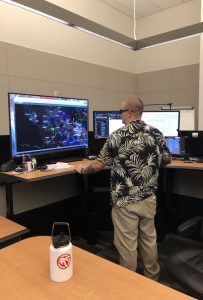
As part of the response to wildfires such as the Camp Fire and an effort to make the grid more efficient, PG&E is increasing remote surveillance and automation that can deal with faults. Dizney says safety is a top priority of the company.
“Keeping the grid safe is a 24/7, 365-day job,” Dizney said. “We have somebody manned everyday, all day. We have data that comes in remotely that we can access and analyze, like alarms that come from different substations or field equipment. You take all that information and you analyze it and use it to make decisions.
“We rely on a lot of remote operation,” Dizney continued. “We now have what we call self-healing circuits, which means that if there is a car pole [accident], we have equipment that will identify where the car pole [accident] was and automatically isolate it. So we have a lot of remote information, more now than we’ve ever had.”
Besides concerns over natural disasters such as wildfires, earthquakes and wind storms, utilities companies deal with threats from attackers. Belmont says PG&E has to deal with the growing digital nature of the grid.
“We take it pretty seriously as far as the security of the system,” Belmont said. “We have a lot of different devices that are operated remotely. So I think there’s always that threat, or at least the fear, that that could be manipulated. So we got a huge security operation that maintains security around that sort of thing, just making sure that our grid stays stable and keeps delivering power.”
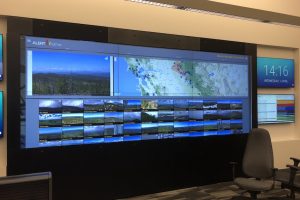
While new technology continues to change how electricity is made and managed, the biggest force that will influence the grid in coming years is the environment. Belmont says the need for reduction in greenhouse gas emissions is highlighted by wildfires.
“Climate change has a lot to do with some of the fire risk,” Belmont said. “We’ve had crazy years with a lot of water, not a lot of water, going back and forth. For generating electricity, we’re trying to reduce the number of plants we have that pollute. We’re doing pretty good, especially because in California rooftop solar is so popular that we get a lot of generation of people just putting solar on their houses.”
Though not considered renewable energy sources, hydroelectric and nuclear power plants emit no greenhouse gases. Simms says these sources offer immediate advantages in cost-savings.
“Fossil fuel plants are not as efficient in terms of producing power just simply because those types of units work off of steam,” Simms said. “The prime mover for them is whatever fossil fuel you burn that spins that turbine, it’s all confined in the unit. Whereas with a hydro, we have a 2,000 feet elevation distance between where we get our water and where the units are actually sitting. With that head pressure, the units have 1,000 psi at those turbines.”
While PG&E plans to start decommissioning Diablo Canyon nuclear power plant in 2024, nuclear power may still play a part in the future’s grid, as more research is spent toward Generation IV reactors. Simms says nuclear power can be cheaper than fossil fuels.
“Nuclear is a very efficient form of generation as well,” Simms continued. “It does basically the same thing [as fossil fuel], but because it’s nuclear you can get a lot of generation out of that piece of nuclear fuel over a period of a year. The downside with that is the waste, but nuclear, in a long-term view, has cost savings also.”
If today’s trends continue, tomorrow’s grid will rely on automation, remote operation, smart metering, home solar, stored power and renewable energy to supply Americans with their power. One thing is certain, however; our way of life, today or tomorrow, would be impossible without the efforts of thousands of men and women who maintain California’s largest machine.
For more articles, read COVID-19 affects family routines, time spent with grandparents and COLUMN: Student Body President encourages community to find joy, preserve.
Bryce Foshee can be reached via Twitter @brycer_f and via email.

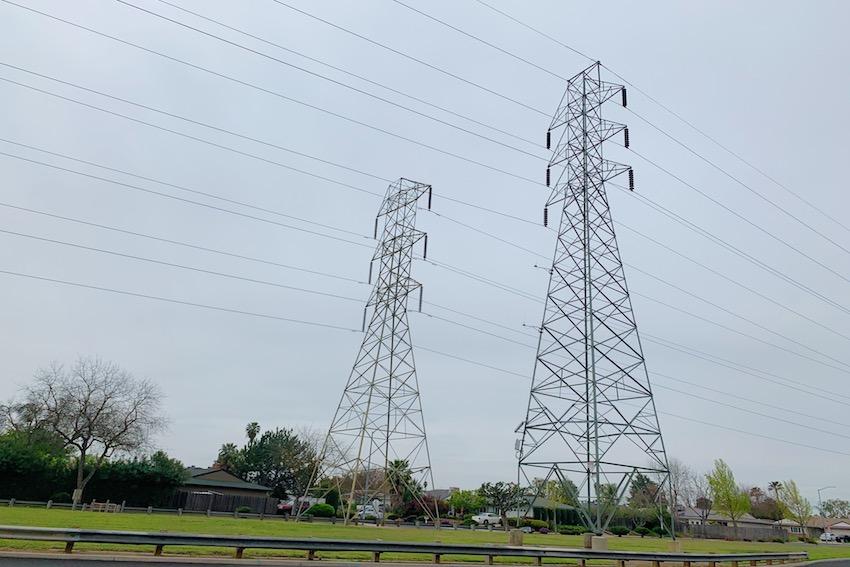

![[Podcast] Moving Forward: God in the unexpected](https://thefeather.com/wp-content/uploads/2023/01/IMG_9994.jpg)
![[Podcast] Moving Forward: Fentanyl crisis](https://thefeather.com/wp-content/uploads/2022/11/20170509-fentanyl-pictures-0012.jpg)


